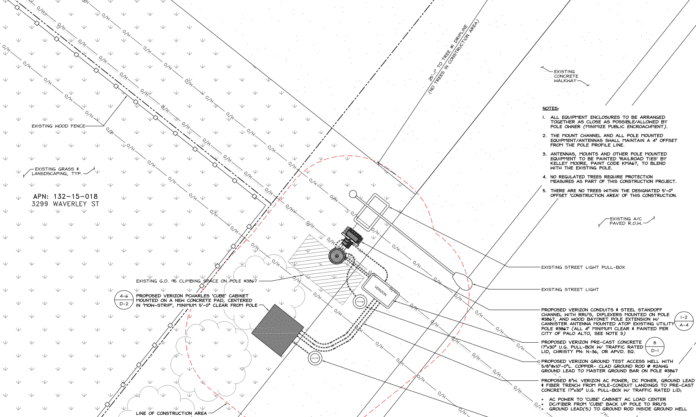In California, challenges to small cells at scale include selecting the correct paint color and addressing concerns about health impacts
Actual deployments of small cells has lagged behind perhaps ambitious projections for years. The problem is that, given the unique nature of each site and the regulatory process that governs a particular location, it’s difficult to establish a scalable, predictable process. With deployment estimates ranging from $25,000 to $50,000 per small cell, carriers have struggled to develop a one-size-fits-all approach; coupled with regulations that vary from city to city, it can take months of lead up for field work that can be completed in hours or days.
Case in point, Verizon Wireless is currently working with the city of Palo Alto, Calif., to install 92 small cells, 80 on wooden utility poles owned by the city, and 12 on metal street lights, according to a project description received by the city on Jan. 30. Verizon contemplates three configurations, all containing one antenna, three radios and one disconnect. The variations are in whether the battery back up is located on the pole, on the ground next to the pole, or not needed at all.
That initial project description has been revised twice, with the most recent variation, dated May 5, detailing outstanding questions left up to the local Architectural Review Board for decision. Those issues include “a final shade of brown paint for equipment attached to wood poles. Additionally, should all pole mounted equipment including mounts, cabling and conduits be painted?” Relative to the ground cabinet, Verizon wants to know if should be painted to blend in with surroundings? If so, what color green? Or concealed in street furniture? What about an art wrap? Is that preferred to street furniture? And so on.
And that’s concurrency with the city. There’s also community buy in, which, based on a report in the The Mercury News, is a mixed bag. Eric Kang, who lives near one of potential sites, told the publication: “You can see it right outside the window. I’m concerned about its effects on my health, my child’s health. These things are very powerful. These things are constantly on.”
Verizon is reportedly planning a series of community meetings to engage with residents that live near proposed sites.

